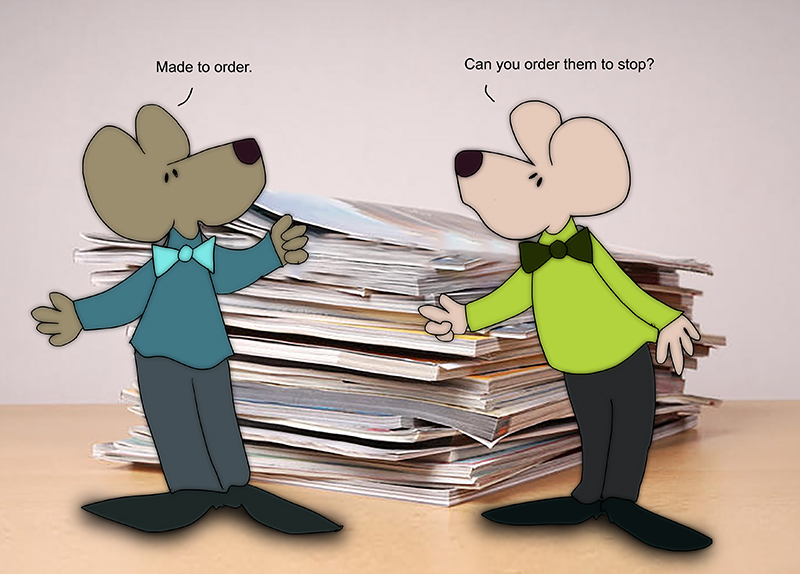An entire stack of them waited for me in the mailbox yesterday, and it is only mid-August. Mail-order catalogs. It is a big problem here at our address. We get a fair amount in the mail every single day. But somedays, they number into the tens or more.
I don’t even give them a look, as they get tossed directly into the recycling bin, where I bid them farewell and hope they get converted into something useful.
There was a time, and for quite some time, I would dial the number in the catalog and tell them to take me off their mailing list. This process tended to be on the difficult side because the good agent on the other end of the phone was instructed to persuade me to stay on the mailing list at all costs. I was spending a sizable part of my day trying to whittle them down, never to see an actual decrease in mailings.
Our names and address were being sold over and over again. Such is the case today.
And here is who we have to thank for the start of it all. It was on this date, August 18, 1872, that the first mail-order catalog was issued thanks to A.M. Ward. Aaron Montgomery Ward.
His life story is fairly interesting, starting from humble beginnings, born in New Jersey. The family moved to Michigan early on. When he was young, aged nine, he started working various jobs like stacking brick in a kiln. Soon after, he took a job as a measly sales clerk in a general store for $6 per month, plus board. He worked his way up over the next three years, and when he left the store, he was pulling in $100 per month plus board.
Aaron stayed in sales. Eventually, he found his way to become a traveling salesman for a dry goods house. He would travel out to the country to make his rounds, and the people living in the rural areas would complain about the advantage of city folk being able to buy directly from the stores without the markup of a middleman. Him.
That is where the mail-order catalog idea began. He had the thought that they could order directly from the store this way. It was a grand idea, but it took a little time before it grabbed hold. Then, as you know, he persevered, and his mail-order catalog made him rich. Montgomery Ward. It wasn’t long before Sears Roebuck copied the idea.
And the rest, as they say, is history.
Now, search and rescue teams have to visit certain households just to find people amidst all the mail-order catalogs.
On a serious note, I tried to find a straight answer about how many trees are used to process all the catalogs in one year. There are dozens and dozens of answers out there, but many give the estimate of “100 million trees to make 20 billion catalogs.”
No matter the answer, we know the number of the sacrificial trees has to be astronomical.
Personally, I haven’t ordered from a paper catalog since the internet came into being. I was one of the early ones, convincing my friends at work that it was safe to use a credit card online. Back when it was. And for the most part, it still is.
Today, I may take one of those catalogs and go sit with a tree. I will read to the great tree about the super cushion shoes and the miracle wrinkle creams. And then I will say I’m sorry and hope I don’t have poison ivy by the time I get up.
=========
“A tree is our most intimate contact with nature.”
― George Nakashima
=========
“Trees are sanctuaries. Whoever knows how to speak to them, whoever knows how to listen to them, can learn the truth.”
― Herman Hesse
=========
“If you would know strength and patience, welcome the company of trees.”
― Hal Borland
=========
The big, big paper waste
